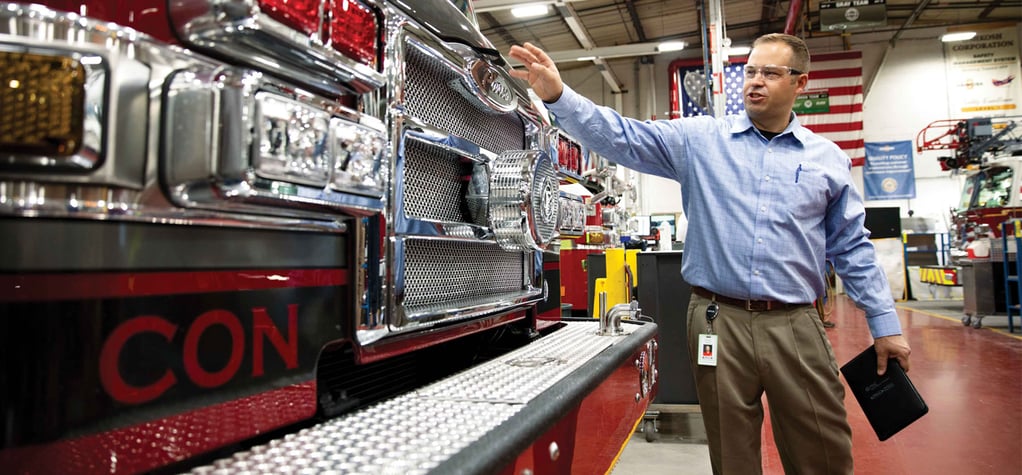
The process of purchasing a fire truck involves several sequential steps and processes that dictate the truck configuration, design, systems included and the final delivery date.
If a fire department is planning to purchase a new fire truck, what should they expect?
The information included below outlines the entire order lifecycle of a new fire truck purchase, from initial communication to final inspection, with all of the important steps a fire department and Pierce Manufacturing will complete together.
Purchasing a fire truck typically includes the steps below:
- Bidding and Ordering Process
- Contract and Order Review
- Approval Package and Pre-Construction Visit
- Detailed Engineering
- Manufacturing
- Final Inspection
Want to skip ahead? Just click on the section of interest above to get started!
Fire Truck Bidding and Ordering Process
The fire truck bidding and ordering process may include several steps of communication between fire departments, community representatives, group purchasing organizations and manufacturers. The process starts with a bid specification and ends with a signed contract and/or a purchase order.
Bid Specifications
When a fire department is interested in purchasing a new fire apparatus, the process of communicating the requirements of the new truck starts with the creation of a specification.
A fire truck bid specification details the product and features desired by the fire department. This includes critical information such as mission and use of the vehicle, pump size, tank size, aerial reach, overall height and length restrictions, and other mission critical needs. The specification also includes responsibilities for the bidder including submission dates, question periods, penalties, delivery, bond and insurance requirements.
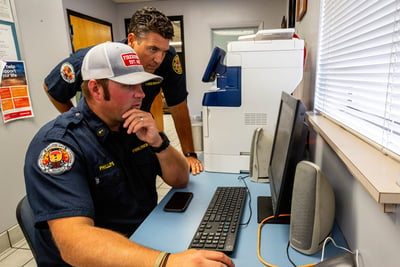 Once the fire truck bid specification is complete, there are several ways a fire department may communicate their requests and obtain a formal bid proposal.
Once the fire truck bid specification is complete, there are several ways a fire department may communicate their requests and obtain a formal bid proposal.
- A formal bidding process involves advertising the desired procurement requirements so that any interested manufacturer’s sales representative may submit their bid to the committee.
- A Consortium, or group purchasing bidding process organization, may be utilized in place of the formal bidding process since they offer defined product configurations to choose from, rather than open specifications.
Learn about the five benefits of fire apparatus consortiums here. - Negotiated sales occur when a customer reaches out directly to a single or a group of select manufacturers and their dealers with a desired specification to receive proposals and to accelerate the buying process.
Customer preference can also determine the appropriate manufacturer for a new fire apparatus. Many fire departments prefer having similar trucks in their station fleets to make training, procedures and preventive maintenance more efficient. Learn more about fleet standardization here.
Bid Proposal and Ordering
When the bid specification is obtained from a fire department or municipality, a proposal is then created to meet those specifications.
Before the proposal can be finalized, a number of items will be reviewed by the dealer and manufacturer. Some examples are listed below:
- Request performance, bid or payment bonds (if required)
- Review overall height, length and weight restrictions
- Review angle of approach and departure restrictions
- Review Aerial tip-load calculation (if applicable)
- Review 4x4 driveline (if applicable)
- Review of any other component fitment concerns
- Request special options and add to proposal
- Validate proposal and address any issues
Once these items have been reviewed, the final bid proposal, including required certificates and warranties, is sent to the fire department or municipality.
If the customer awards the bid to Pierce and our dealer, the contract is approved and signed and a purchase order is issued.
Opportunities for a shortened lead time exist with the Build My Pierce and Stock Program which can be considered by the department, depending on their needs.
Contract and Order Review
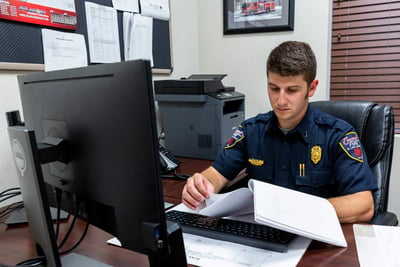 When received, the order is reviewed and an approval drawing is created to give a visual representation of the truck configuration priced. The approval drawing is then passed to several engineering groups for review in the event they need clarification on specific build requests. The engineering team may offer suggestions or recommendations to the dealer and customer on layout, component or system selection.
When received, the order is reviewed and an approval drawing is created to give a visual representation of the truck configuration priced. The approval drawing is then passed to several engineering groups for review in the event they need clarification on specific build requests. The engineering team may offer suggestions or recommendations to the dealer and customer on layout, component or system selection.
In this phase, the engineering teams will ensure the truck configuration is buildable.
The engineering teams will also review and confirm all critical content, including overall height and length, and approach and departure angles.
This review process is beneficial to customers because they will receive multiple drawings and truck layouts, including a finished truck configuration with included dashboard layouts, equipment rack layouts, electrical load charts and weight summaries. Moreover, it is an opportunity to ask questions, give feedback on changes needed and ensures the overall design of the truck configuration.
Once the order review is completed, an approval package is created and a pre-construction visit is planned. During this visit, the customer and dealer meet with the Pierce team to review the more detailed fire truck order.
Approval Package and Pre-Construction Visit
After the order is submitted, Pierce representatives, the dealer and the customer schedule an approval or pre-construction visit to verify and finalize the details of the fire truck order. A pre-construction visit is often completed at a Pierce Manufacturing facility, but can also occur at a firehouse, or via video conferencing.
This dedicated time to review the order in detail allows customers to talk through each element of the specification and be involved in the details of the truck design. Subject matter experts are often included to talk with customers about specific design considerations and system specifications. If the pre-construction visit takes place at Pierce, customers tour the facility with the opportunity to attain a better understanding of the build process as they see and explore fire trucks throughout the build process.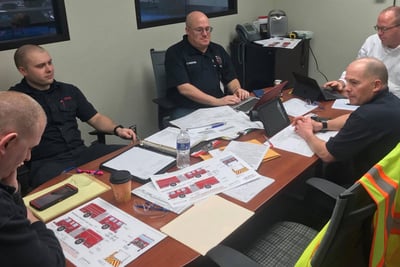
The meeting typically includes reviewing the sales drawings and layout to finalize the features, paint codes, major components, system requirements, and most importantly, to answer any customer questions. The final approval drawings are marked with changes if required, and the finalized order details are confirmed by all parties involved.
In addition to finalizing the truck components and features, the pre-construction visit is also focused on determining the fire truck graphics. From color choices to image selection, the group reviews the graphic options for every inch of the fire truck, including the front of the truck, side of the truck, inside cab doors, rear of the truck and stabilizers. Customers also learn about materials selection, like vinyl and gold-leaf, and review additional graphic elements, including cab lettering, reflective striping, body lettering, roof numbers, aerial boom graphics and optional special plates. Customers are encouraged to bring along photos or vector artwork to help guide the graphics discussion.
Learn more about the detailed fire truck graphics process in this blog post.
The pre-construction visit is an opportunity for customers to be a part of the final design details of their fire truck order and to ensure each customer feels complete confidence in proceeding to the next phases of the order process.
At the conclusion of the pre-construction visit, the final design is completed and sent to Detailed Engineering.
Detailed Engineering
 Before any fire truck manufacturing can begin, the final design and drawings must be reviewed and approved by the engineering team at Pierce. This process is critical because it ensures the compatibility of all bid specifications, confirms the operational functionality of added components and systems, and creates a manufacturing timeline with detailed work instructions and assembly prints.
Before any fire truck manufacturing can begin, the final design and drawings must be reviewed and approved by the engineering team at Pierce. This process is critical because it ensures the compatibility of all bid specifications, confirms the operational functionality of added components and systems, and creates a manufacturing timeline with detailed work instructions and assembly prints.
To start, the engineers review the requested components and systems to determine how they will work efficiently together. For example, engineers need to consider appropriate functionality and compatibility of breathing air systems, hydraulic and pneumatic tool systems and fire suppression systems, if requested.
Based on the order specifications, the engineering team will determine the final truck configuration and create all the necessary bills of material and drawings for parts, components and systems with a focus on optimal functionality.
At the completion of the detailed engineering phase, Pierce representatives provide the dealer and customer with a final order showing all compatible options, the final configuration and a detailed construction timeline to meet the requests outlined in the bid specification and approval package.
Manufacturing
Pierce is an industry leader in custom fire apparatus innovation and manufacturing. With more than 1.5 million square feet of design, construction and assembly space, Pierce has an experienced team in place.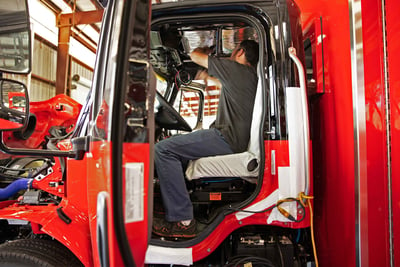 Pierce has several locations to serve customers, including:
Pierce has several locations to serve customers, including:
- Appleton, Wisconsin
- Bradenton, Florida
- Clearwater, Florida
Through continued innovation, research and development, Pierce has remained at the forefront of advancing technology and truck ingenuity. Taking the time to listen to feedback from firefighters to design and manufacture trucks around their expressed needs is what truly sets Pierce apart.
Manufacturing follows a detailed, step-by-step process, briefly outlined below.
- Metal Fabrication. The first step in fire truck manufacturing is cutting, bending and machining internally fabricated piece parts for each unique order.
- Welding Operations. Once the piece parts of a weldment are fabricated, the welding process begins. All welders have received the same Pierce Custom Welding Certification.
- Painting. The painting process follows a 7-step process. Surfaces are prepared, cleaned, surface primed, hand-sanded, sealer primed and then finished with a base coat and final protective clear coat.
- Frame-Up, Cab and Chassis assembly. During this stage, a number of items are coming together in parallel, including the sub-assemblies within the frame rails, wheels and axles, chassis and the cab components.
- Final Assembly. In this step, the body is mounted to the chassis and the water pump is mounted, if required. From there, all of the optional items are set in place and the fire truck begins to take shape.
- Testing and final checks. As the truck comes together, all of the components and systems are tested. Final testing includes truck alignment, setting calibrations, electrical testing, water-flow testing and road testing, to name a few.
- Underwriters Laboratory Audit. All apparatus is third-party, audit-certified through Underwriters Laboratory to assure it complies to all applicable standards in the current edition of NFPA 1900. The certification includes all design, production, operational, and performance testing of not only the apparatus, but those components that are installed on the apparatus.
After final testing, auditing and graphic application, the truck is ready for the final inspection process.
Final Inspection
When fire truck manufacturing is complete, the Pierce team completes a final evaluation. This evaluation confirms that each item detailed in the customer order is both functioning correctly and precisely crafted to the customer’s specifications. During this evaluation, between 150 to 200 points of inspection are reviewed based on the truck model, design and any included custom components.
When the final inspection is complete, each fire truck undergoes a detailing process to clean and polish the truck so it’s ready for customer inspection.
During the final inspection visit, customers also have the opportunity to drive the truck and test any operational or functional components, like running the generator or testing aerial devices. In addition, the customer can work directly with an experienced member of the Pierce team to learn about added components or new technology features to be sure they fully understand all operating procedures.
Final inspection of the truck typically includes the customer, dealer and one or more members of the Pierce manufacturing or engineering team. Using an innovative computerized reporting system, called E-Pickup, the customer can review the truck and the option-list items in detail and document any areas of concern. Any concerns are documented and photographed within the E-Pickup tool.
Learn more about the final inspection process now.
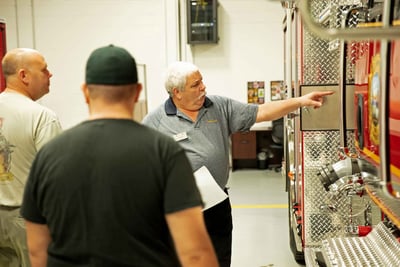 During the final step in the process, the Pierce team reviews the E-Pickup modifications and completes a walk-around to review all documented concerns. The fire trucks are brought back to the manufacturing bays and any repairs or adjustments are completed. All points of repair inputted in the e-pickup system are documented and photographed to show the customer how and when the modifications have been completed. Then the Pierce team does a final 10-point inspection to confirm all items are functioning appropriately. Once complete, the truck is released for shipping and prepared for final delivery.
During the final step in the process, the Pierce team reviews the E-Pickup modifications and completes a walk-around to review all documented concerns. The fire trucks are brought back to the manufacturing bays and any repairs or adjustments are completed. All points of repair inputted in the e-pickup system are documented and photographed to show the customer how and when the modifications have been completed. Then the Pierce team does a final 10-point inspection to confirm all items are functioning appropriately. Once complete, the truck is released for shipping and prepared for final delivery.
Final delivery may be the end of the buying process, but it's just the beginning of the apparatus's life. Throughout a truck's lifespan, Pierce Aftermarket Support is available to provide product training, convenient access to experienced support technicians, and fast access to parts and service.
The fire truck order process involves a lot of collaboration between fire departments and Pierce professionals, but the final result brings both improved safety and pride to a community.
To learn more, please take a look at our Pierce products overview or contact a dealer at any time.
Do you have any questions about the order process? We’ll answer them in the comments below!